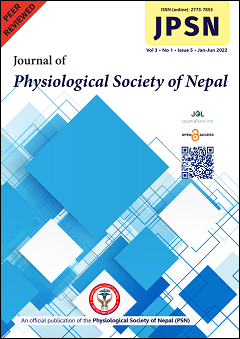Enhancing collaborative learning through peer-assisted learning
DOI:
https://doi.org/10.3126/jpsn.v3i1.57762Keywords:
Active learning, Collaborative, Health Professions’ EducationAbstract
Peer-assisted learning involves students (peer tutors) facilitating small collaborative study groups composed of peer tutees. In a session, learning content is revised through a range of activities that encourage discussion, clarification, elucidation, and evaluation. Peer-assisted learning promotes greater sense of belonging to the academic community. Along with cognitive and psychomotor development, affective components such as an increase in self-esteem, self direction, analytical thinking, self-evaluation, and peer cooperation are also developed. Having similar roles, a similar knowledge base, and similar learning experiences all contribute to social cognitive congruence, which allows for informal and empathic communication and facilitates the creation of a learning environment that encourages an open exchange of ideas and personal concerns of students. An increasing number of medical students are enrolling in medical school worldwide, there are fewer resources available for teaching them, and there is a persistent push for economy and cost-effectiveness where many students can actively learn in a classroom setting. These factors all contribute to a growing interest in peer-assisted learning in the medical field worldwide. Despite empirical evidence pushing for institutions to adopt peer-assisted learning, it is an underutilized tool in Nepal. It is the goal of this review to provide an overview of peer-assisted learning, its underlying theories, benefits and pitfalls, and how it can be implemented.
Downloads
Downloads
Published
How to Cite
Issue
Section
License
Copyright (c) 2023 Journal of Physiological Society of Nepal

This work is licensed under a Creative Commons Attribution-NonCommercial 4.0 International License.

